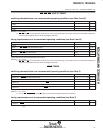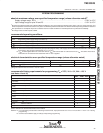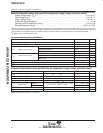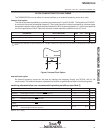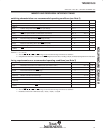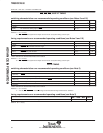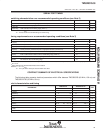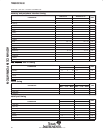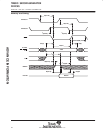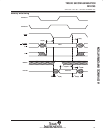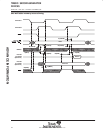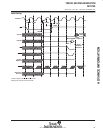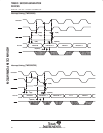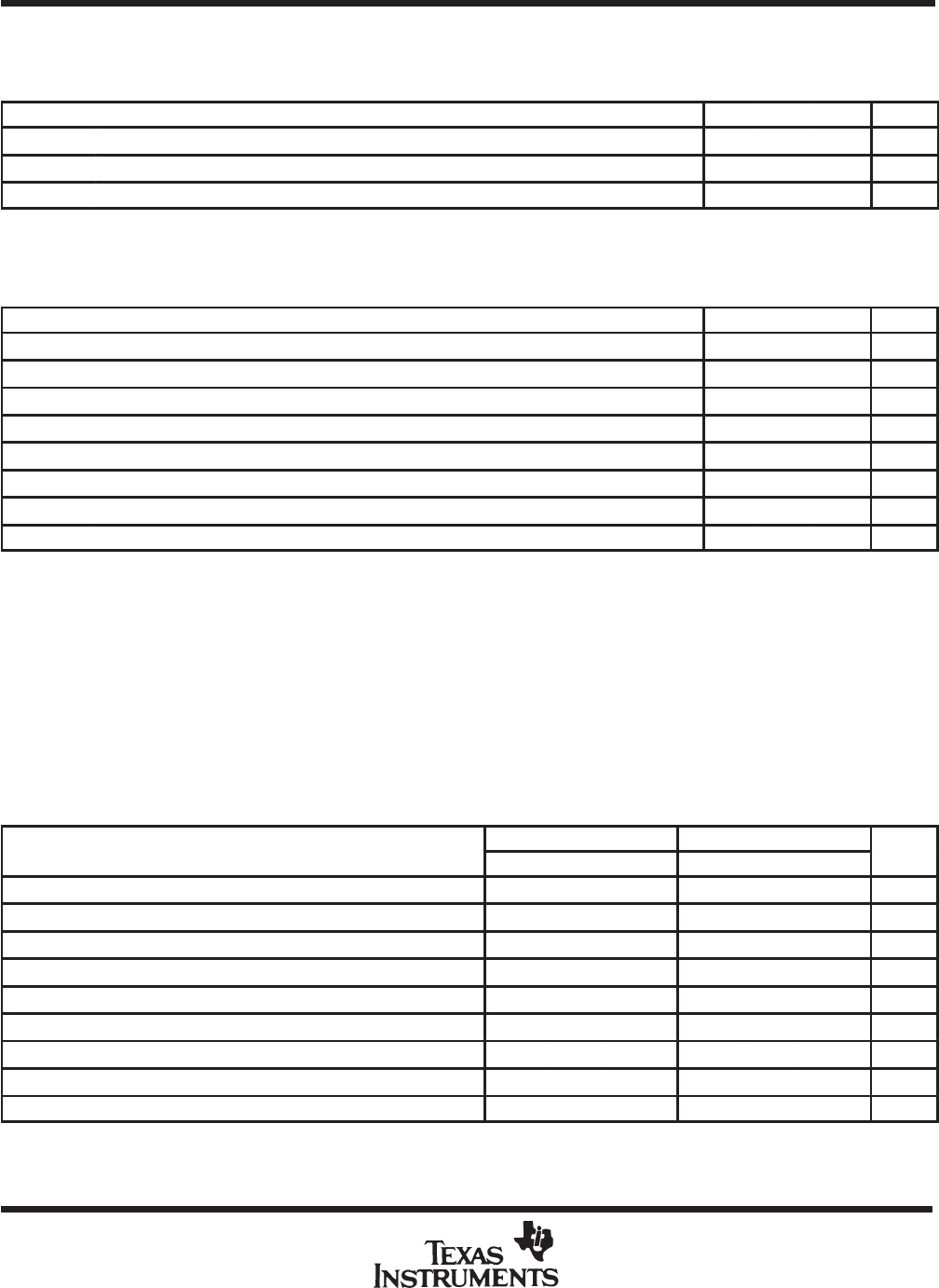
PARAMETER UNIT
TMS320C25-50
SPRS010B — MAY 1987 — REVISED NOVEMBER 1990
POST OFFICE BOX 1443 • HOUSTON, TEXAS 77001
39
SERIAL PORT TIMING
switching characteristics over recommended operating conditions (see Note 3)
PARAMETER MIN TYP MAX UNIT
t
d(CH-DX)
DX valid after CLKX rising edge (see Note 18) 75 ns
t
d(FL-DX)
DX valid after falling edge (TXM = 0, see Note 18) 40 ns
t
d(CH-FS)
FSX valid after CLKX raising edge (TXM = 1) 40 ns
NOTES: 3. Q = 1/4 t
c(C)
18. The last occurrence of FSX falling and CLKX rising.
timing requirements over recommended operating conditions (see Note 3)
MIN NOM MAX UNIT
t
c(SCK)
Serial port clock (CLKX/CLKR) cycle time
†
160 ns
t
f(SCK)
Serial port clock (CLKX/CLKR) fall time 25
‡
ns
t
r(SCK)
Serial port clock (CLKX/CLKR) rise time 25
‡
ns
t
w(SCK)
Serial port clock (CLKX/CLKR) low or high pulse duration (see Note 19) 64 ns
t
su(FS)
FSX or FSR setup time before CLKX, CLKR falling edge (TXM = 0) 5 ns
t
h(FS)
FSX or FSR hold time before CLKX, CLKR falling edge (TXM = 0) 10 ns
t
su(DR)
DR setup time before CLKR falling edge 5 ns
t
h(DR)
DR hold time after CLKR falling edge 10 ns
†
The serial port was tested at a minimum frequency of 1.25 MHz. However, the serial port was fully static but will properly function down to
f
sx
= 0 Hz.
‡
Value derived from characterization data and not tested.
NOTES: 3. Q = 1/4 t
c(C)
19. The cycle of the serial port must be within 40%-60%.
CONTRAST SUMMARY OF ELECTRICAL SPECIFICATIONS
The following table presents electrical parameters which differ between TMS320C25 (40 MHz, 100 ns) and
TMS320C25-50 (50 MHz, 80 ns).
clock characteristics and timing
TMS320C25 TMS320C25-50
MIN TYP MAX MIN TYP MAX
t
c(SCK)
97.7 597 78.13 597 ns
t
d(CIH-C)
5 30 12 27 ns
t
f(C)
5 4 ns
t
r(C)
5 4 ns
t
w(CL)
2Q – 8 2Q 2Q + 8 2Q – 7 2Q + 3 ns
t
w(CH)
2Q – 8 2Q 2Q + 8 2Q – 3 2Q + 7 ns
t
d(C1-C2)
Q – 5 Q Q + 5 Q – 6 Q + 2 ns
t
su(S)
5 Q – 5 4 Q – 4 ns
t
h(S)
8 4 ns
ADVANCE INFORMATION



